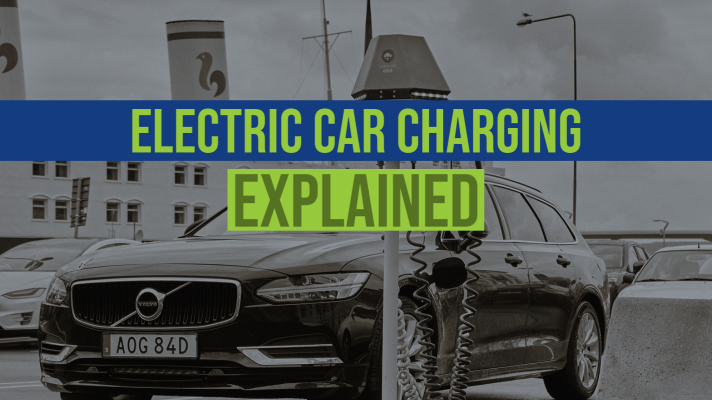Electric Car Charging Explained
It is no secret that getting used to charging an electric vehicle can be confusing. With so many ways and speeds to charge your EV, you’re bound to get bewildered. Electric cars have several constitutional differences to a standard fossil-fueled car; Naturally, charging is a massive one, it’s not quite the same as filling up at a petrol pump! So, let’s get to the bottom of electric car charging.
Charging at Home
Conveniently, much like a mobile phone, your vehicle can be charged overnight in your own home. Of course, it can be topped up during the day where needed too. However, home charging points will need to be installed by a professional. Certified charging providers include installation costs in the unit’s price as well as subtract the £350 government grant. At-home charging times can vary. Typically, they are 3.7kW or 7kW, giving you a fill-up time of around 15-30 miles of range every hour.
The fitting process involves mounting the charging unit onto a stable surface near where you park. For example, a wall or garage door where it is safely connected to the mains electricity.
Charging in Public
The number of electric vehicles on the roads are rapidly increasing. Therefore, many public destinations are gaining charging points to cater for them. Most public charge points offer at least 7kW charging, allowing you 20-30 miles of range per hour. However, you will need to bring your own charging cable. This is usually supplied with your vehicle as standard. Occasionally, a unique mobile application is required to commence your charge.
Sporadically, there may be situations when charging is desperate. Fortunately, many motorway services and other locations across the UK offer rapid charging points. These points provide a range anywhere between 43-350kW. This may be a more expensive solution, but they are capable of dispensing high amounts of electricity in a short amount of time. Charging in public isn’t always essential, especially if you already have a home charging point. Still, they are helpful for frequent top-ups on a long drive or even a family road trip this year!
There are loads of helpful websites to help locate your nearest charging point, such as ZapMap and PodPoint.
How do Charging Cables Work?
To be able to understand charging an electric vehicle, it is vital to know how a charging cable works. A car charging cable has two ends, one fitting into the charge point and the other fitting in your vehicle. Although, not all cables are the same. Batteries in electric vehicles need to be charged with a direct current. At home, you will be drawing an alternating current, so your car will need to have a built-in converter capable of switching from AC to DC. The most common form of infrastructure primarily found at home and the workplace is AC charging. There are two types of AC vehicle-side connectors…
- Type 1 Charging – These typically have a power rating of between 3.7kW-7kW, featuring five pins, no inbuilt locking mechanism, and can only manage single-phase power.
- Type 2 Charging – These are by far the most common connectors, typically offering a power rating between 3.7kW-7kW, seven pins, an inbuilt locking mechanism, and can manage 3 phase power. In 2014, it was deemed that all public charging stations must include a type 2 connector or connecting capabilities.
DC Charging will be Seen with Rapid Chargers
This involves converting the power before it enters the vehicle, thus bypassing the cars own converter. DC charging point installations require a lot of energy from the grid, making it a lot more costly but a much faster form of charging.
It is well documented that using electricity as your fuel source is much more sustainable than fossil fuels. The price of electricity will vary between home, work, and public settings. Although, the average domestic electricity rate at home in the UK is around fourteen pence per kWh. This means that charging a 60kW EV fully would cost in the region of £8.30-£9.40, offering approximately 200 miles in range. With this in mind, you should remember that electricity rates across the country will vary depending on where you live. It is always best to check with your provider.
Related Article: How Much Does It Cost To Charge An Electric Car?
Well, that’s our guide to electric car charging. Think you can manage? We’re sure you can! Go electric today, get the guide below or get in touch here!
Tags : AC, AC Charging, car charging, charging, DC, DC Charging, eco-friendly, electric car, electric car charging, electric vehicle, EV, ev charging, Fast charging, home charging, living with an electric car, PodPoint, Public charging, Type 1 charging, Type 2 charging, ZapMap

